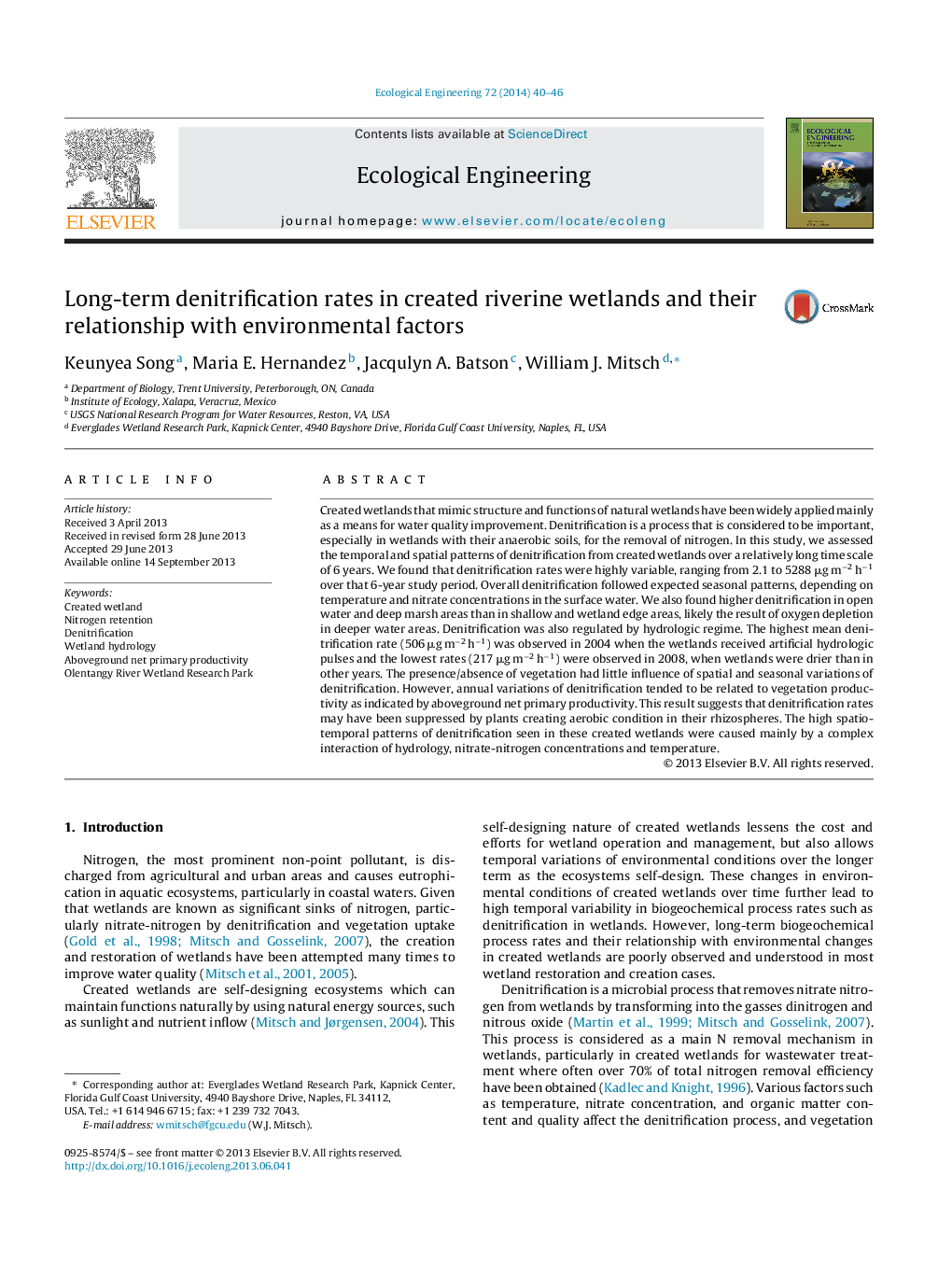| Article ID | Journal | Published Year | Pages | File Type |
|---|---|---|---|---|
| 4389357 | Ecological Engineering | 2014 | 7 Pages |
Created wetlands that mimic structure and functions of natural wetlands have been widely applied mainly as a means for water quality improvement. Denitrification is a process that is considered to be important, especially in wetlands with their anaerobic soils, for the removal of nitrogen. In this study, we assessed the temporal and spatial patterns of denitrification from created wetlands over a relatively long time scale of 6 years. We found that denitrification rates were highly variable, ranging from 2.1 to 5288 μg m−2 h−1 over that 6-year study period. Overall denitrification followed expected seasonal patterns, depending on temperature and nitrate concentrations in the surface water. We also found higher denitrification in open water and deep marsh areas than in shallow and wetland edge areas, likely the result of oxygen depletion in deeper water areas. Denitrification was also regulated by hydrologic regime. The highest mean denitrification rate (506 μg m−2 h−1) was observed in 2004 when the wetlands received artificial hydrologic pulses and the lowest rates (217 μg m−2 h−1) were observed in 2008, when wetlands were drier than in other years. The presence/absence of vegetation had little influence of spatial and seasonal variations of denitrification. However, annual variations of denitrification tended to be related to vegetation productivity as indicated by aboveground net primary productivity. This result suggests that denitrification rates may have been suppressed by plants creating aerobic condition in their rhizospheres. The high spatio-temporal patterns of denitrification seen in these created wetlands were caused mainly by a complex interaction of hydrology, nitrate-nitrogen concentrations and temperature.
